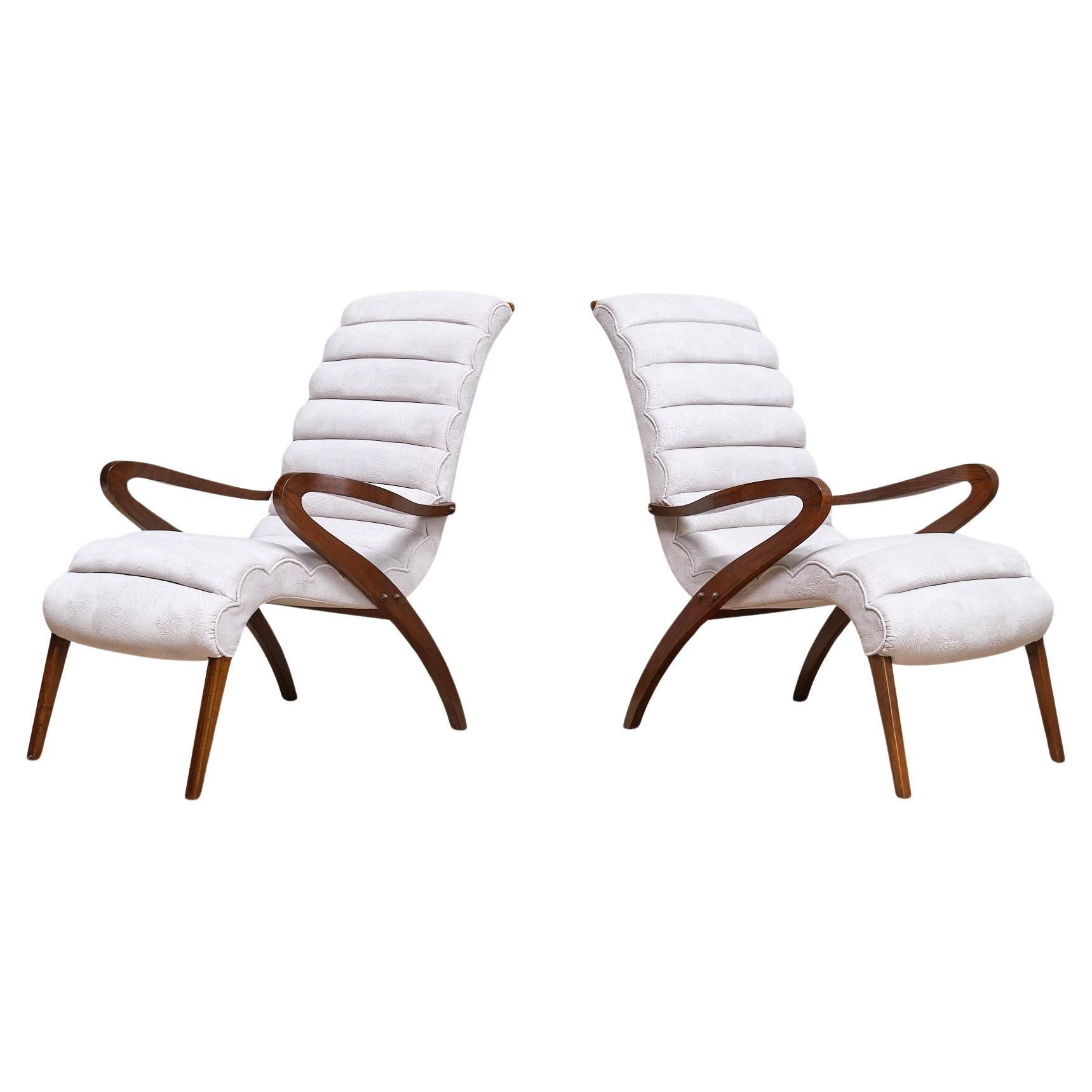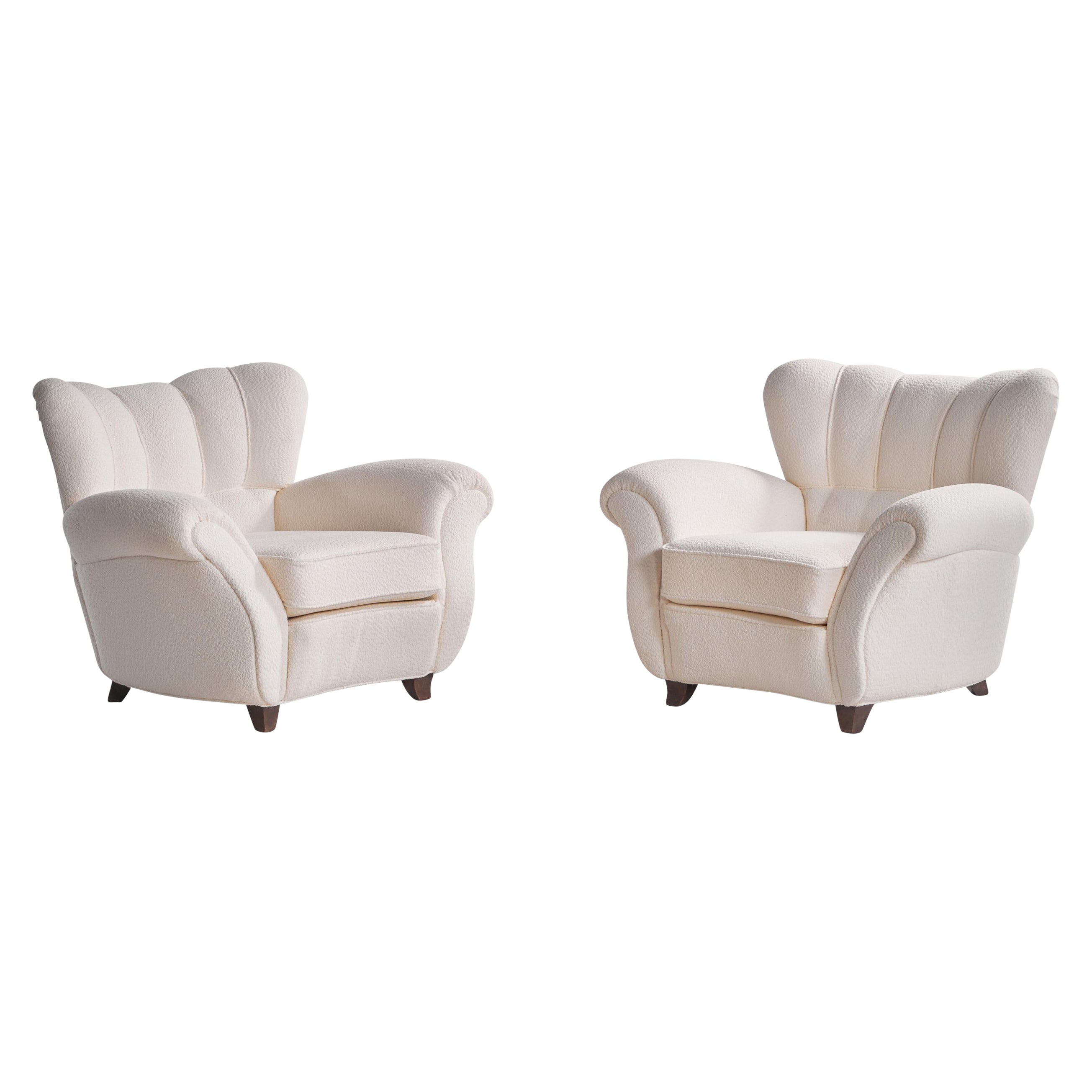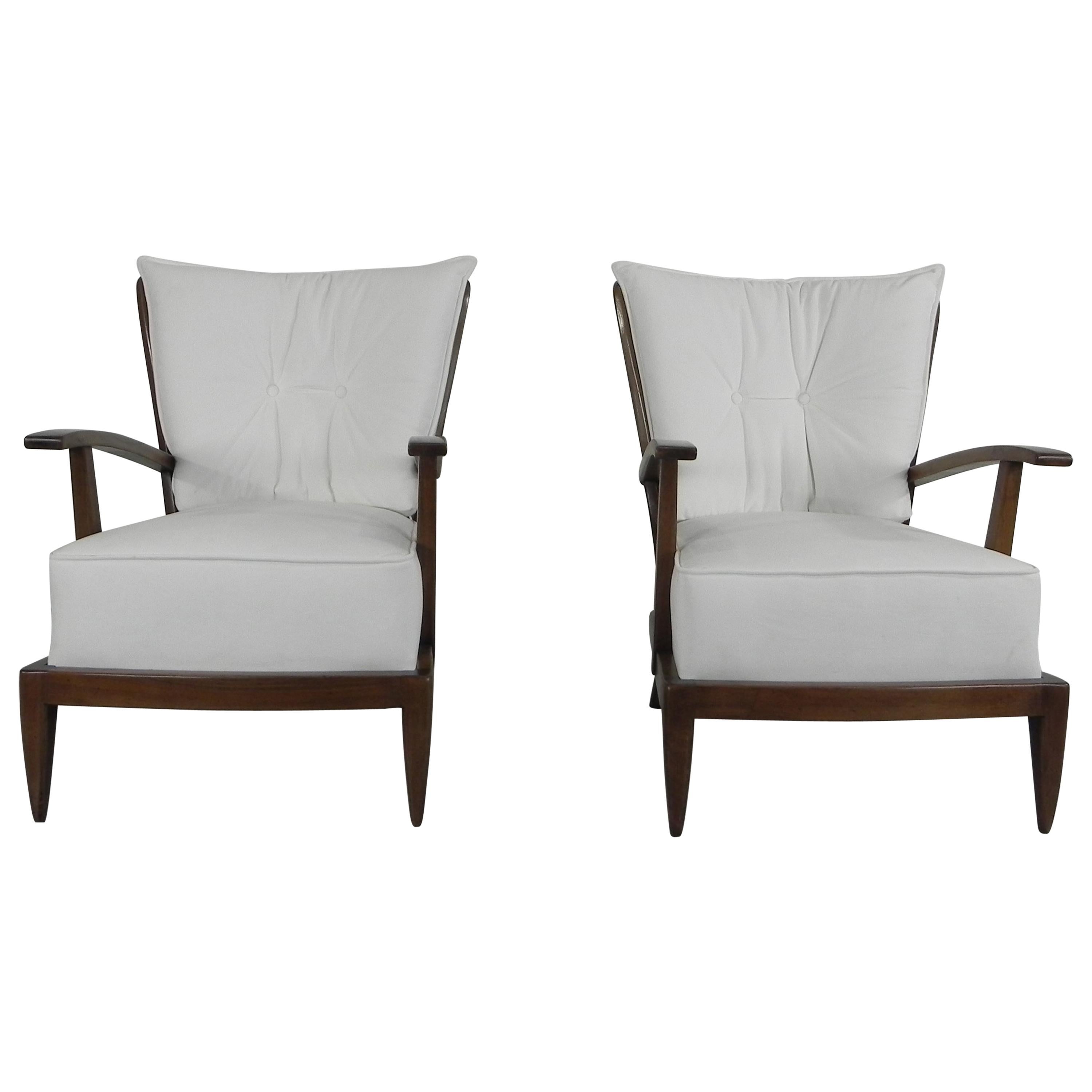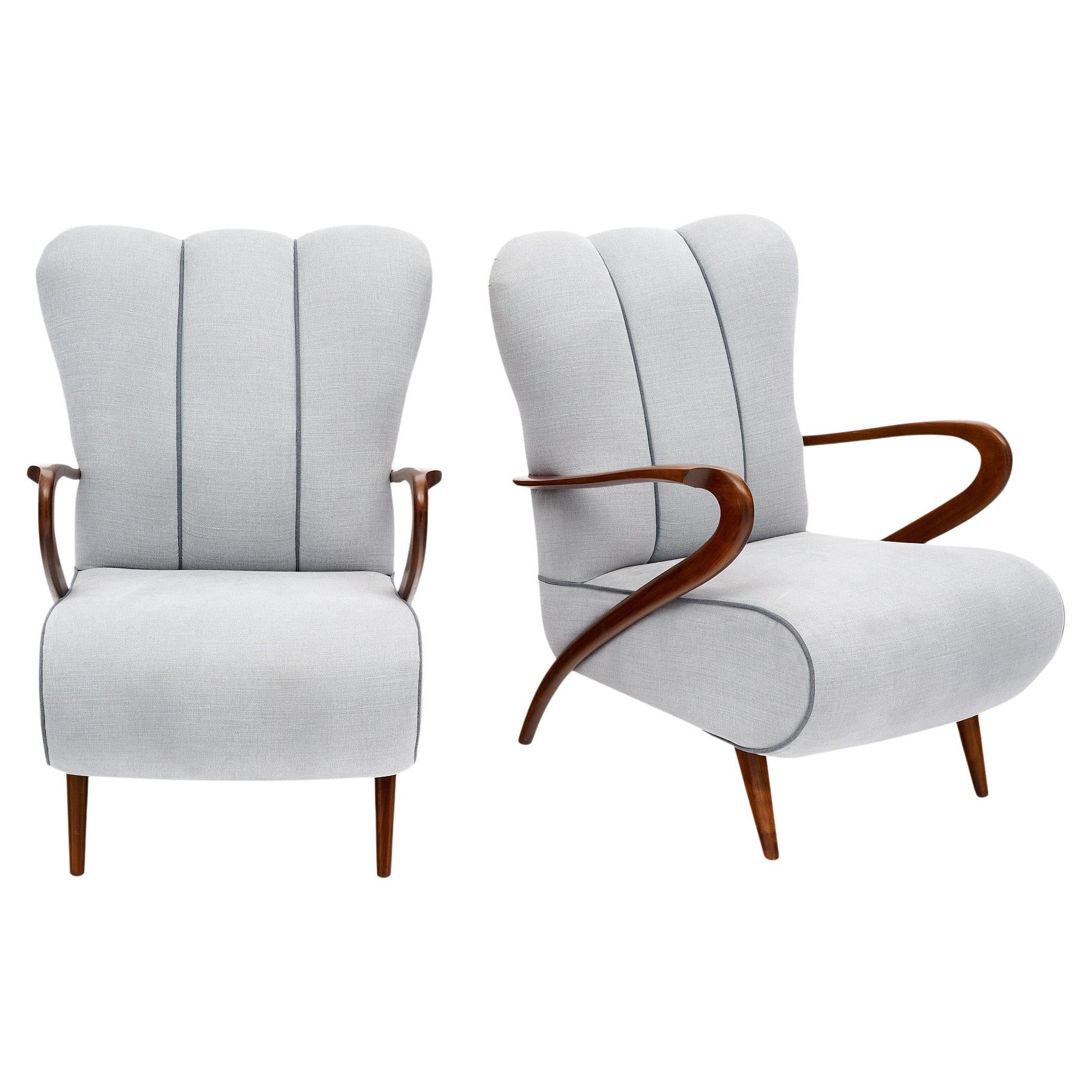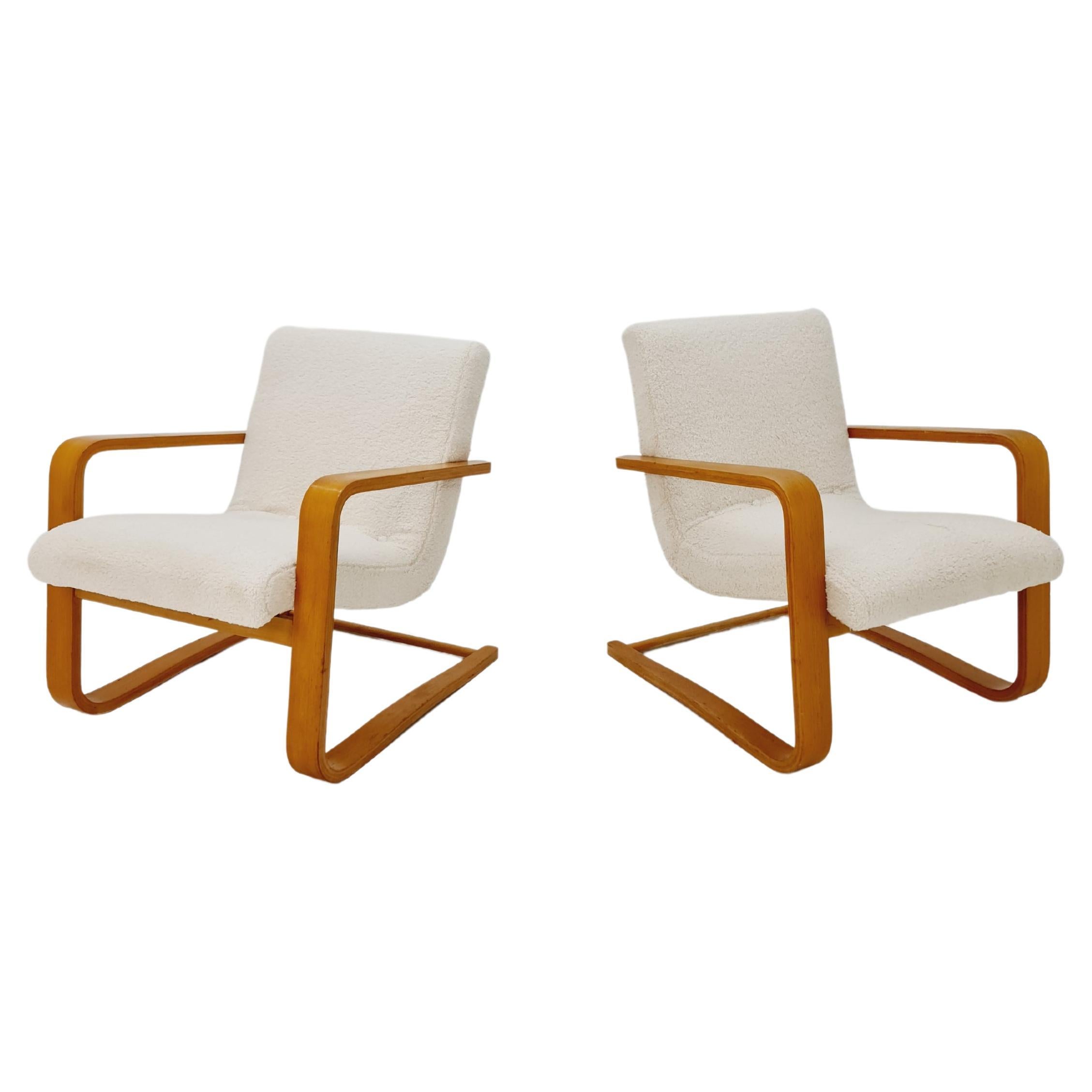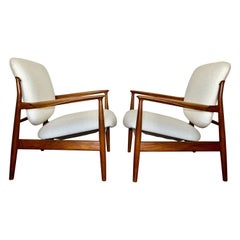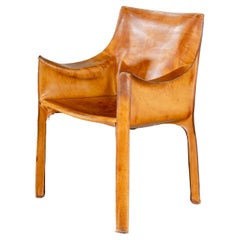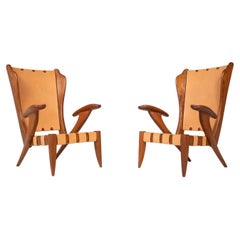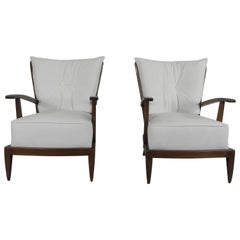Guglielmo Ulrich 1930s Italian Liberty Armchair Lounges, Sculpted Wood, Pair
About the Item
- Creator:Guglielmo Ulrich (Designer)
- Similar to:Gio Ponti (Designer)Carlo Enrico Rava (Designer)Ico Parisi (Designer)
- Dimensions:Height: 30.32 in (77 cm)Width: 24.41 in (62 cm)Depth: 32.68 in (83 cm)Seat Height: 14.18 in (36 cm)
- Sold As:Set of 2
- Style:Mid-Century Modern (Of the Period)
- Materials and Techniques:
- Place of Origin:
- Period:
- Date of Manufacture:1930s
- Condition:Reupholstered. Minor fading. Sparingly and tastefully restored. All internal structural and functional elements thoroughly checked and repaired as necessary, fresh new upholstery. Stunning inimitable patina maintained on the arms. Cleaned, oiled and waxed.
- Seller Location:Grand Cayman, KY
- Reference Number:1stDibs: LU5587242611952
Guglielmo Ulrich
Furniture designer Guglielmo Ulrich was born in Milan to a family with Danish origins. After completing his studies at the Brera Academy, the Scuola Speciale di Architettura and the Polytechnic University of Milan in 1927, Ulrich’s status quickly rose in high-society circles, as he’d gained a reputation for creating elegant interiors for a range of commercial and private clients. Architecture and furniture design in Milan was evolving during the era owing to industrialization, and Ulrich’s modernist work was seen as fresh and forward-looking.
In 1930, Ulrich established the furniture company ARCA — which was short for Arredamento Casa — with colleagues Attilio Scaglia and Renato Wild. Together they created a platform for Ulrich’s designs, which were quite different from the typical furnishings found in Europe at the time.
Ulrich favored simple lines — tapered table and chair legs, lean silhouettes — and the graceful contours of his console tables and dining chairs are representative of an endeavor to streamline neoclassical forms. He created luxurious but practical furniture and home accessories that featured an emphasis on craftsmanship as well as an integration of exotic materials such as ebonized wood, opaline glass and green marble. Ulrich’s designs were very much in line with what we now know as the Art Deco style, which was officially introduced to the world in 1925 at Exposition Internationale des Arts Décoratifs et Industriels Modernes in Paris. He collaborated with legendary architect and designer Gio Ponti on designs for a hotel property in the late 1930s and co-edited Ponti’s revered Domus magazine with Milanese architect Melchiorre Bega.
By the 1950s, Ulrich was firmly established as one of the most influential Milanese designers, having a hand in designing homes, commercial properties and more. In 1961, he won the Fiera di Trieste award for his lightweight Trieste chair, a seat that shared common ground with Ponti’s iconic Superleggera chair and was produced by Saffa.
Find vintage Guglielmo Ulrich seating, tables,and cabinets on 1stDibs.
- ShippingRetrieving quote...Shipping from: Friedberg, Germany
- Return Policy
More From This Seller
View AllVintage 1950s German Organic Modern Lounge Chairs
Fabric, Upholstery, Teak
Vintage 1950s Danish Mid-Century Modern Armchairs
Brass
Mid-20th Century Italian Mid-Century Modern Armchairs
Leather
Vintage 1970s Italian Mid-Century Modern Lounge Chairs
Wood, Ash
Vintage 1950s Italian Mid-Century Modern Loveseats
Metal, Brass, Iron, Wrought Iron
Vintage 1950s Italian Mid-Century Modern Lounge Chairs
Brass
You May Also Like
Vintage 1940s Italian Organic Modern Armchairs
Brass
Vintage 1930s Italian Modern Armchairs
Leather, Wood
Vintage 1940s Italian Organic Modern Lounge Chairs
Fabric, Wood
Mid-20th Century Italian Mid-Century Modern Armchairs
Walnut
Vintage 1950s Italian Mid-Century Modern Armchairs
Upholstery, Wood
Vintage 1960s German Mid-Century Modern Armchairs
Textile, Bentwood
Read More
These Museum-Worthy Star Armchairs Are Exemplars of 1980s Design
Meticulously crafted in Germany, the limited-edition seat has been acquired by several institutions, including the Met in New York.
Barnaba Fornasetti’s Hallucinatory House Has His Father’s Spirit
Behind a nondescript facade in northeastern Milan is the magical residence of Barnaba Fornasetti. It's a shrine to the style developed by his design-legend father, which still defies categorization.
